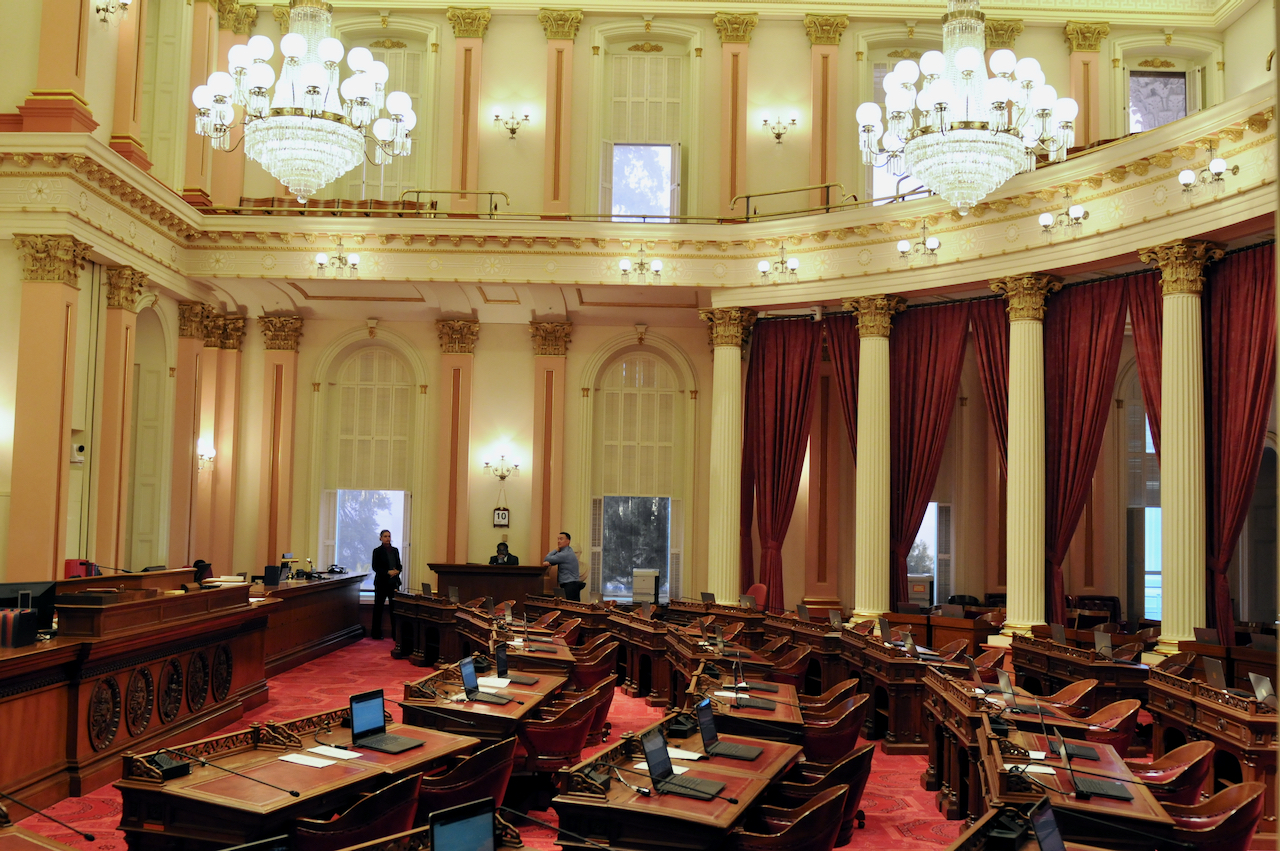
California State Capitol. (Photo: Kevin Sanders for California Globe)
Comparing California Government to Those of Other States
Legislative, Executive, Judicial: What’s different? What’s not?
By Chris Micheli, February 8, 2019 5:47 am
UPDATED: California state government is not unique among the other states. All 50 states provide for a republican form of government in their individual constitutions. All of the states are based upon the federal government with three branches: legislative, executive and judicial.
Legislative Branch
California’s Legislature is comprised of two houses – State Assembly and State Senate. The Assembly has 80 members elected every two years and the Senate has 40 members elected every four years. The maximum number of years that can be served is 12 years – either in a single house or combined. A majority vote is required for most legislation, although a 2/3 majority vote is required for certain measures, such as urgency clause bills and tax increases.
With one exception, all states are bicameral and they all have upper and lower houses of differing sizes. For the lower house, half a dozen states provide 4-year terms, while the remaining states provide 2-year terms. The sizes of the houses range from 42 to 400 members. For the upper house, a dozen states provide 2-year terms, while the remaining states provide 4-year terms. The sizes of the houses range from 21 to 67 members. About 35 states do not have term limits for maximum service. About 22 states have a simple majority vote requirement for all measures. The remaining states have a hybrid system requiring both simply and super majority votes for measures that are considered.
Executive Branch
California’s Governor is one of nine constitutional officers elected every four years. He or she can serve a maximum of two 4-year terms. The Lt. Governor is elected separately and is limited to two 4-year terms.
The governor is the chief executive in all 50 states. In two states, the length of a gubernatorial term is two years. In the remaining states, it is a four-year term. Roughly 16 states do not have a maximum limit on terms that a governor can serv, while the remaining states cap the number of terms to two. About half a dozen states do not have a Lt. Governor, while the remaining states do.
Judicial Branch
California’s judicial branch is comprised of superior courts (trial courts), courts of appeal (intermediate appellate courts), and the Supreme Court (the highest court). All appellate court justices are selected by the governor and confirmed by a separate body. Trial court judges are elected; however, the governor appoints superior court judges to vacancies. There are seven members of the Supreme Court. Appellate justices face “retention elections” every 12 years.
All of the states have a supreme court as the highest court in the state. Most states have seven seats on the high court, with the lowest at five and the highest at nine. Four states have lifetime appointments, while the remainder use six to fourteen-year terms, with a majority at eight years. Roughly twenty states have a mandatory retirement age. About twenty states elect their high court justices, while the remainder are appointed to their office.
- Enforcement of Labor Commissioner Judgments - December 6, 2025
- Effect of Emancipation - December 6, 2025
- Harbor Commissions in California - December 5, 2025





So where’s the comparison of California’s government???
This is just a 50,000 foot overview of all of them…
Total click bait, misnomer article….
Boo…
There’s so many differences and you really didn’t mention any of them, California is one of the most democratic states in the union as exemplified by the fact that not many other states give their voters the power to initiate referendums and recall governors. Most other states don’t give that power to the voters. California is also one of the few state governments with full time legislators. In many other states, legislation is a second job. Many people think that’s better, but I tend to disagree. Seeing how complicated the world is now, I think legislature needs fully dedicated professionals to deal with it. When you get businessmen who know everything about running a Pizza parlor trying to solve social issues at the state level, you get poor results.